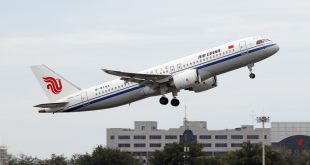Published : April 18,2024

The ongoing third plenary session of the 20th Communist Party of China (CPC) Central
Committee is tasked with starting a new round of strategic and pace-setting reforms to advance
Chinese modernization, once again testifying to the Party’s courage, resolve and wisdom.
The significance of China’s reforms is evident. For more than 40 years, the reform and opening
up has created a miracle of rapid economic growth and ever-rising international prestige, laying a
solid foundation for the country to achieve rejuvenation of the Chinese nation. Having withstood
numerous daunting tests and achieved tremendous success from humble beginnings, reform
efforts have now entered a “deep-water zone.” While the easier tasks have been completed, the
remaining challenges are tough and require significant political courage and wisdom to
overcome. China’s reform is at a critical juncture as it will either forge ahead or risk falling
behind.
The epoch-making third plenary session of the 18th CPC Central Committee held in November
2013 ushered in a new stage in China’s reform and opening up by launching a range of historic,
systematic and comprehensive reforms. In more than a decade, the country has rolled out over
2,000 reform plans covering various fields such as economy, politics, culture, society, ecological
progress, Party building, and national defense. These reforms have helped put in place
foundational institutional frameworks in all sectors. The scale and intensity of reforms are
unparalleled. These efforts have enabled the Chinese economy to consistently rank second
globally and serve as a major driver of global economic growth, despite challenges such as the
COVID-19 pandemic and severe external pressures.
Economic reform has been a focus of the overall reform agenda. Major measures, including
shortening the negative list for market entry, implementing supply-side structural reforms and
promoting high-level opening up, have led to significant improvements in the country’s market-
based and law-based business environment. As widely recognized, it is the people who have
directly benefited from these successful reforms. After eight years of arduous efforts, nearly 100
million rural residents were lifted out of extreme poverty by 2020, meaning China eliminated
absolute poverty for the first time in history. Through a new urbanization drive, over 140 million
former rural residents have gained access to much better public services over the past decade.
China’s reform efforts have also created dividends for the rest of the world. Initiatives such as the
establishment of 22 pilot free trade zones, the Hainan free trade port, the China International
Import Expo, and the Belt and Road cooperation have created enormous opportunities for other
countries. Despite its significant accomplishments, China still confronts bottlenecks as well as
challenges in achieving high-quality development. Its innovation capacity is not yet strong
enough. It’s imperative and crucial for the country to address financial risks, secure food, energy
and industrial and supply chains, and resolve issues such as insufficient effective demand,
economic flow blockages, inadequate public services, and job creation pressures. Effectively
addressing these problems is pivotal for China’s economic growth prospects and the overall
trajectory of its modernization drive. Amid extensive and profound changes at home and abroad,
comprehensive and continuously deepened reforms are the key to addressing all the problems
and challenges.
Comprehensively deepening reform not only provides an institutional guarantee for Chinese
modernization but also serves as a driving force for stable growth in the short, medium and long
terms. Particularly anticipated are reforms aimed at creating a unified domestic market, fostering
new quality productive forces, and achieving major scientific and technological breakthroughs.
Urgent and practical reforms are also needed in areas such as the fiscal and tax system, finance,
income distribution, and urban-rural integration.
Meanwhile, it’s crucial to strike a proper balance in the pace and rhythm of reform. Swift and
bold reforms should be accompanied by supporting measures to mitigate risks and social
disruptions. The spirit of reform and opening up defines the Chinese people both in history and
in modern days. The CPC is committed to a correct and scientific methodology and a people-
centered approach for advancing China’s reform. Drawing on rich experience and solid progress
from past reforms, the CPC is confident and capable of leading the nation to achieve new
successes in any future reform endeavors.
Xinhua
 Africa -China Review Africa -China Cooperation and Transformation
Africa -China Review Africa -China Cooperation and Transformation
